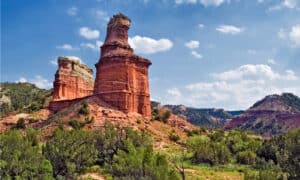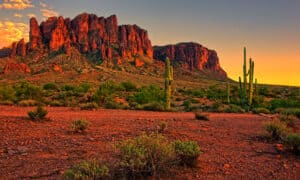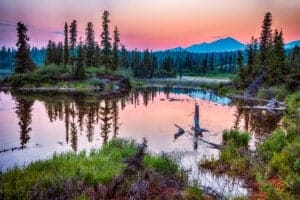Discover the 11 Best National Parks to Visit in Texas
@media (min-width: 481px) {
.mobile-top-content {
display: none;
}
}
#mobileTopContentCTACarouselControls { overflow: hidden; text-overflow: ellipsis; white-space: nowrap; }
.mobile-top-content .more { color: #fff; }
.mobile-top-content a { color: #fff; text-decoration: underline; }
.mobile-top-content a:hover { color: #fff; text-decoration: underline; }
@media (max-width: 480px) {
.mobile-top-content {
background-color: #06a10b;
color: #fff;
text-align: center;
/*height: 60px;
padding-top:5px;*/
font-size:80%;
/* display: block; */
margin: 0px -30px;
}
}
With more than 29.1 million residents, Texas is far more diverse than the media implies. It’s not only famous for barbeque and rodeos but also for a broad array of epic national parks, which boast incredible serene views, canyons, mountains, wildlife, landscapes, and mind-blowing adventures.
We have compiled a list of some of the top-visited national parks in Texas to help you plan an unforgettable trip. From ancient deserts to urban mountain ranges, surround yourself with immense and iconic ecological diversity by checking out the following 11 best national parks in Texas.
1. Guadalupe Mountains National Park
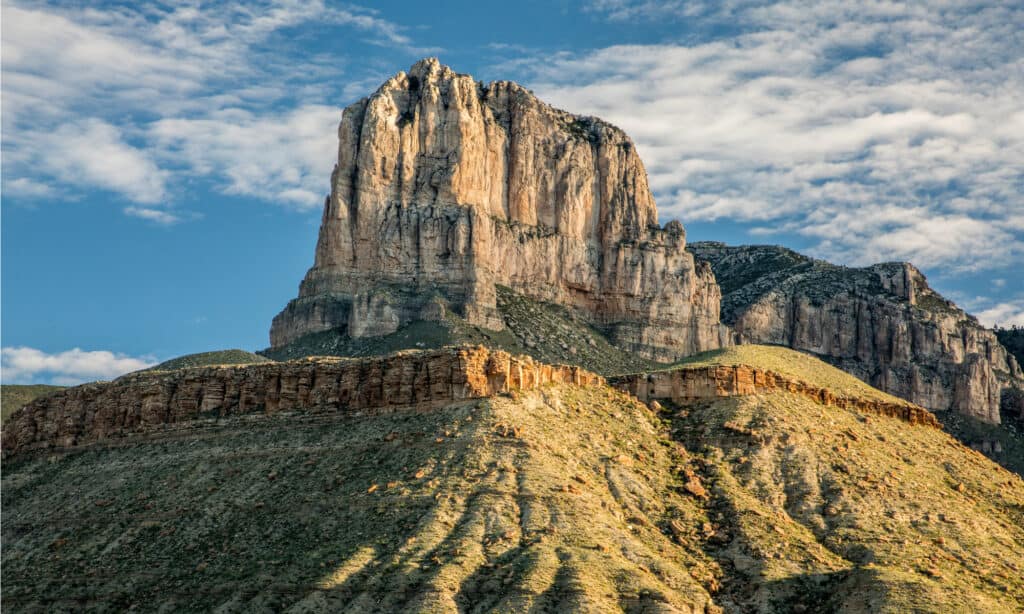
ShuPhoto/Shutterstock.com
| Guadalupe Mountains National Park | |
|---|---|
| Size | 76,293 Acres |
| Animal to See | Black Bear |
| Attraction to See | Salt Basin Dunes |
Arguably the tallest point in Texas, Guadalupe Mountains National Park is famous for the most extensive Permian fossil reef. It’s a great national park that you can visit at any time of the year.
Consider hiking the Devil’s Hall Trail or the Smith Spring Trail to view the park’s rugged landscapes, dunes, and spectacular vistas. You’ll also enjoy the winding trails through the lush streamside woodlands.
Mountain lions can be seen anywhere within the park, more so where the deer are. Other animals like coyotes, black bears, bobcats, badgers, kit foxes, and Texas-banded geckos live in the Guadalupe Mountains.
2. Big Bend National Park
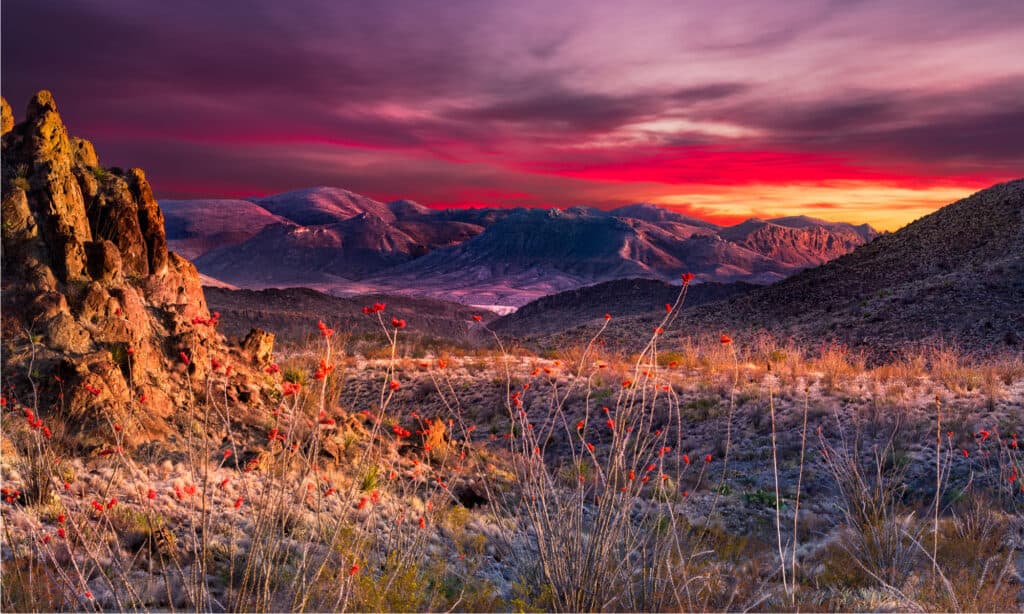
Dean Fikar/Shutterstock.com
| Big Bend National Park | |
|---|---|
| Size | 801,163 Acres |
| Animal to See | Kitfox |
| Attraction to See | Boquillas Canyon |
Located in the southwestern part of Texas, Big Bend National Park is among the best places to go for a hike. There are over 150 miles of trails to explore, each leading you to fantastic views of the rocky terrain, steep mountains, tenacious cactus blooms, carved temple-like canyons, and vistas that span as far as your eyes can see.
Hundreds of bird species live in Sam Nail Ranch and Dugout Wells. Nocturnal mammals such as ringtails, bobcats, raccoons, kangaroo rats, and more than a dozen species of bats can be seen in Javelinas’ frequent spring. You may spot bears, coyotes, and badgers within the park early in the mornings and late in the evenings.
3. Big Thicket National Preserve
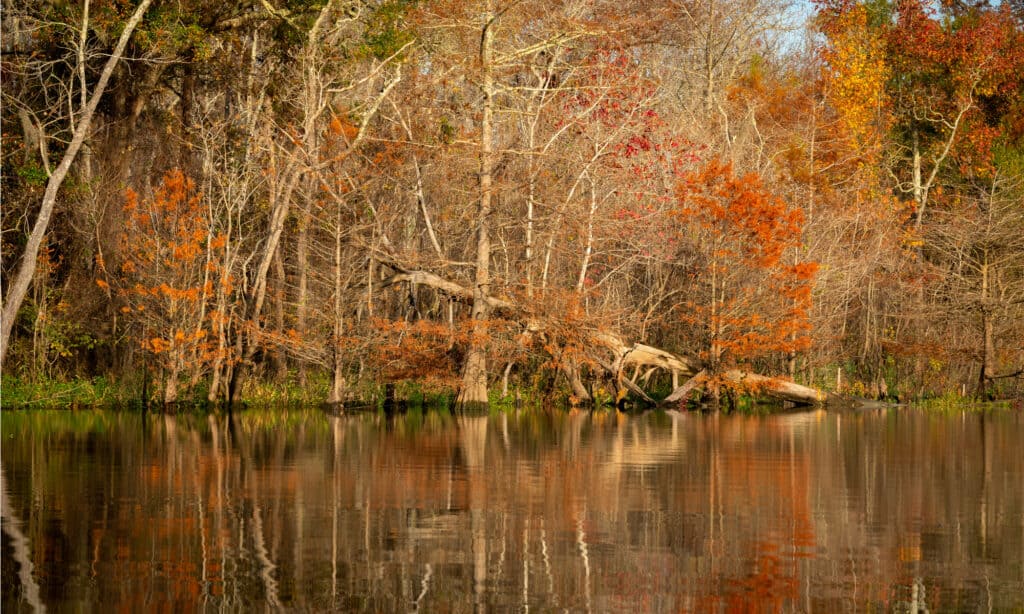
jesmo5/Shutterstock.com
| Big Thicket National Preserve | |
|---|---|
| Size | 113,122 Acres |
| Animal to See | White-tailed Deer |
| Attraction to See | Sandhill Loop |
Well known as the biological crossroad and ark of North America, Big Thicket National Preserve is full of wonders, from breathtaking scenery to majestic animals. This protected area in Texas was mainly established to protect its complex biological diversity, including the pine-hardwood forests.
Big Thicket is crisscrossed by trails of varying difficulty levels, each presenting views of the preserve at different angles. Hike the Beech Woods Trail to experience solitude, wilderness, and real adventure. The park also offers camping, fishing, kayaking, and canoeing opportunities.
While exploring the preserve, you will come across different types of animals. Big Thicket is home to around 60 species of mammals, including white-tailed deer, raccoons, opossums, ringtails, armadillos, skunks, coyotes, and eight species of bats.
4. Fort Davis National Historic Site
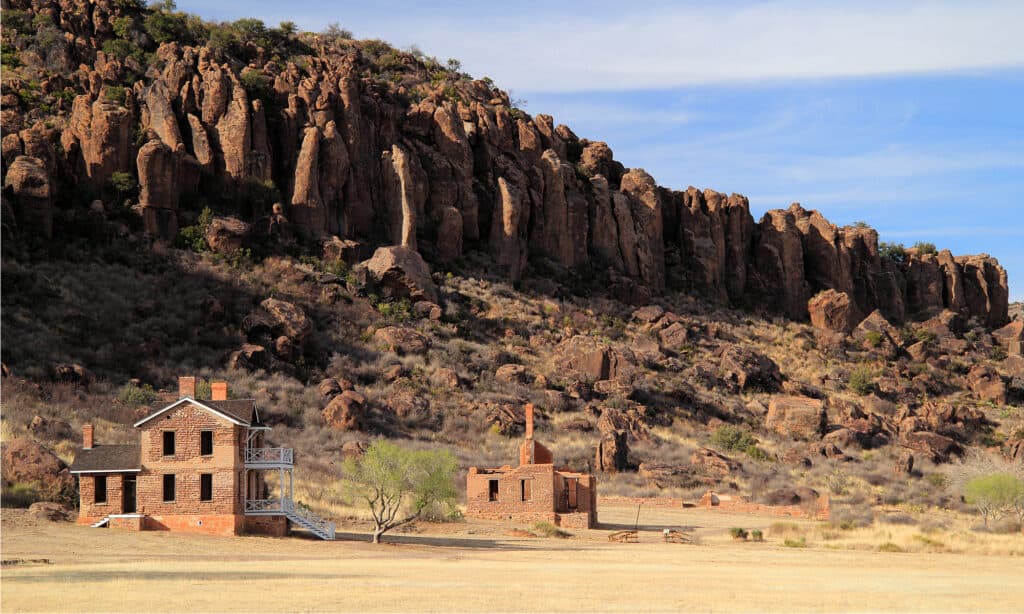
William Silver/Shutterstock.com
| Fort Davis National Historic Site | |
|---|---|
| Size | 523 Acres |
| Animal to See | Mountain Lion |
| Attraction to See | Rattlers and Reptiles Museum |
Designated as a national historic site in 1961, Fort Davis is the perfect place to go if you want to understand the history of African Americans in the frontier military and the West. Civilians had resided on the site after it was abandoned in 1891. Fort Davis was then restored later, and all-black regiments established after the Civil War were preserved at Fort Davis for research purposes.
Explore Fort Davis to see the most conspicuous wildlife that finds sanctuary at the site. You may come across a variety of snakes and horned lizards. Other animals like mountain lions, black bears, javelinas, and kangaroo rats also live there.
Fort Davis is also recognized as a Globally Important Bird Area, providing excellent bird-watching opportunities.
5. Lake Meredith National Recreational Centre
| Lake Meredith National Recreational Centre | |
|---|---|
| Size | 44,978 Acres |
| Animal to See | Pronghorn Antelope |
| Attraction to See | Lake Meredith |
Located approximately 30 miles north of Amarillo in Texas, Lake Meredith National Recreational Centre provides excellent camping opportunities to enjoy the tranquility of the lake.
Lake Meredith has a lot to explore! From canoeing and kayaking to hiking and mountain biking. You can also swim at the lake either during the day or night, but you’re advised not to go alone. All lake areas are open at night except for the Spring Canyon.
Lake Meredith is a great place to watch animals. Pronghorn antelopes, mule deer, coyotes, beavers, skunks, squirrels, and white-tailed deer live by the lake or on the Panhandle Plains Wildlife Trail.
6. Padre National Island Seashore
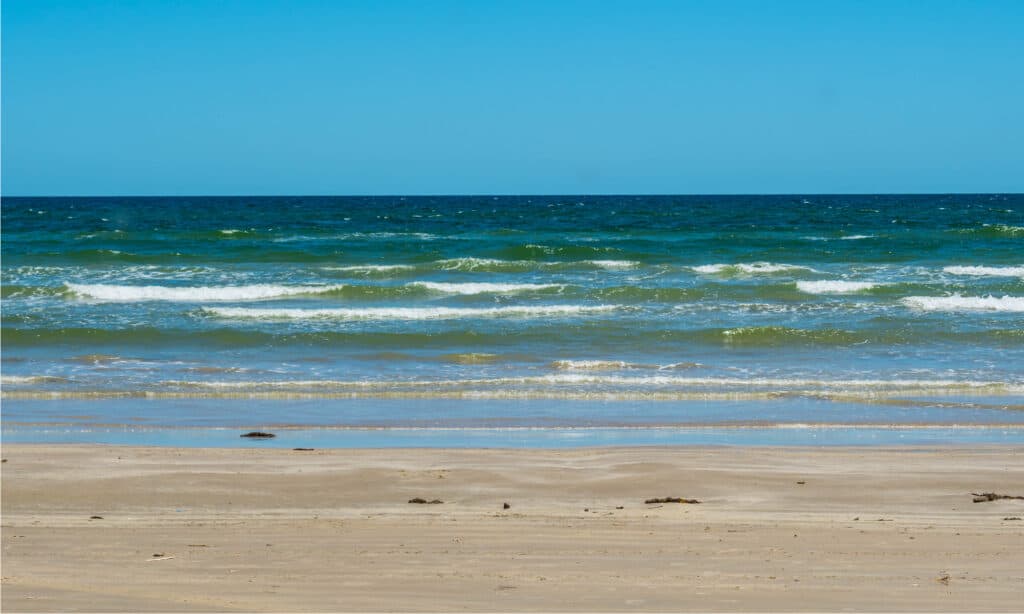
Cheri Alguire/Shutterstock.com
| Padre National Island Seashore | |
|---|---|
| Size | 130,434 Acres |
| Animal to See | Coyote |
| Attraction to See | Laguna Madre |
Watch the most extensive wind-tidal flats and clay dunes by visiting Padre National Island Seashore any time of the year. It’s the best place to see and explore the Laguna Madre, one of the rare hypersaline lagoons worldwide.
The Padre Islands provide a habitat for many animals, including songbirds, jellyfish, ghost crabs, coyotes, and deer. You can find these animals along the shores of Laguna Madre.
If you want to see sea turtle hatchlings released, go to Padre Islands in the summer. Most releases occur between mid-June and August and happen at Malaquite Beach, in front of the visitor center. However, hatchling releases don’t happen daily, so you need to check out the current sea turtle nesting season to be informed.
7. San Antonio Missions National Historic Site
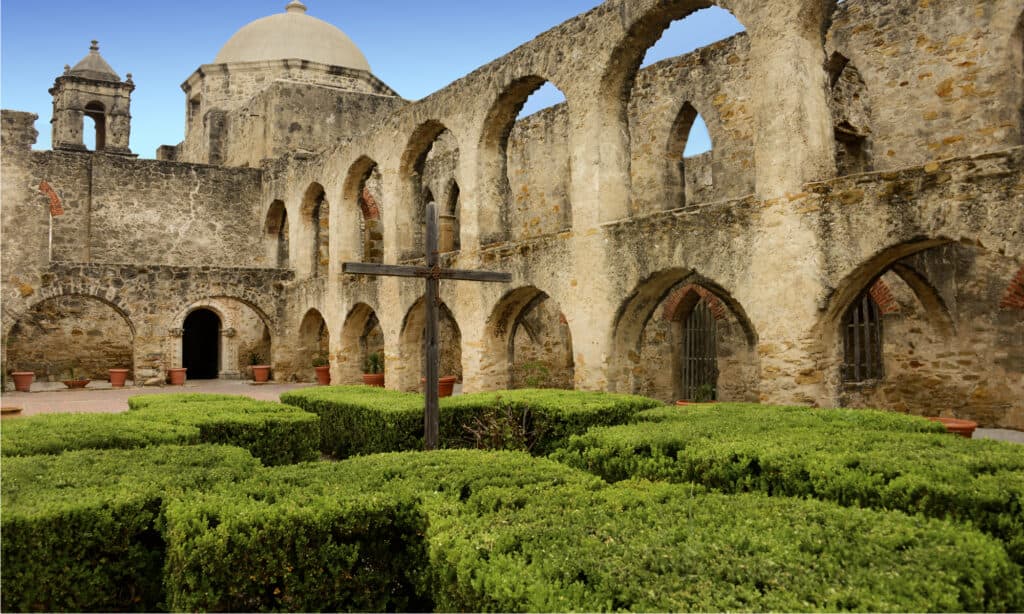
Mike Brake/Shutterstock.com
| San Antonio Missions National Historic Site | |
|---|---|
| Size | 948 Acres |
| Animal to See | Armadillo |
| Attraction to See | San Antonio de Valero |
Check out the San Antonio Missions National Historic Site if you want to learn more about the Spanish people who lived in Texas and the American Indians with whom they had close ties. There are five Spanish frontier missions inside the park- San Juan, the Alamo, Espada, San Jose, and Concepcion.
You can hike, bike or kayak to access all the missions because they are connected by approximately 10-mile trails along the San Antonio River. The park boasts a great diversity of animal species such as armadillos, feral pigs, feral cats, nutrias, roof rats, and various snakes.
8. Palo Duro Canyon State Park
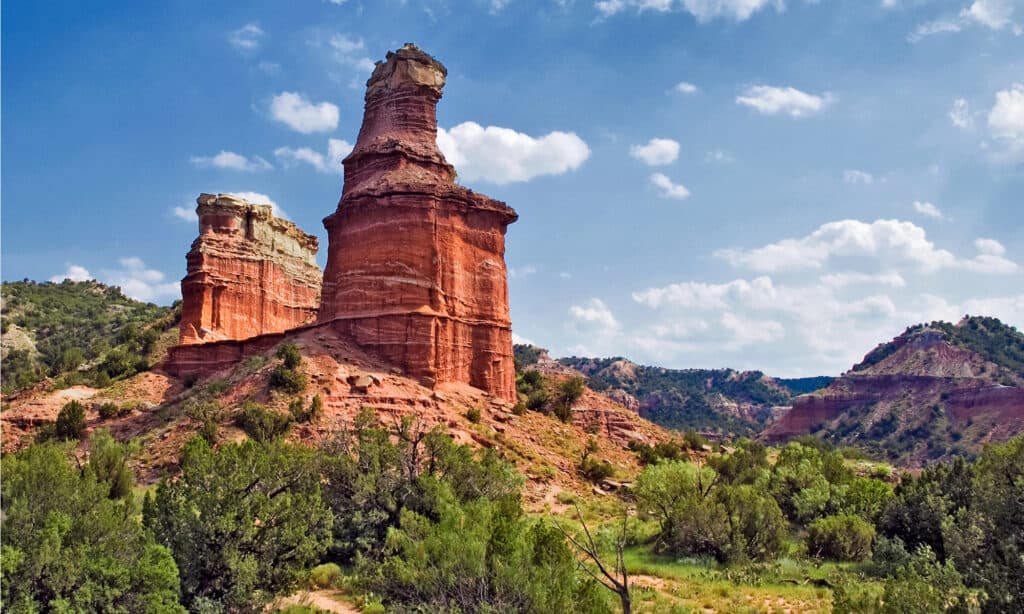
xradiophotog/Shutterstock.com
| Palo Duro Canyon State Park | |
|---|---|
| Size | 29,182 Acres |
| Animal to See | Turkey |
| Attraction to See | Palo Duro Creek Ranch |
With numerous attractions scattered throughout the park, Palo Duro Canyon State Park is a hiker’s paradise. The canyon system of caprock escarpments looks like the ones in Grand Canyon National Park. Palo Duro has more noticeable geological features than Grand Canyon National Park.
Explore the steep mesa walls and multicolored rock formations through hikes and scenic drives. Paved highways provide access to an incredible array of views. The park offers many miles of desert and mountain trails to explore.
Palo Duro has diverse ecosystems that provide habitat to threatened wildlife species like the Texas horned lizard and the Palo Duro mouse. Other animals in the park include white-tailed deer, roadrunners, coyotes, bobcats, wild turkeys, and snakes.
9. Alibates Flint Quarries National Monument

Traveller70/Shutterstock.com
| Alibates Flint Quarries National Monument | |
|---|---|
| Size | 1,371 Acres |
| Animal to See | Glossy Snake |
| Attraction to See | Antelope Creek Village |
Alibates Flint Quarries National Monument is a perfect place to visit if you love quarry tours. Take a ranger-guided hike to the Antelope Creek Village site, where you will be able to see the petroglyphs and learn about the unique architecture and culture of the village.
Be aware of prairie rattlesnakes, glossy snakes, giant desert centipedes, Texas brown tarantulas, and other great plains snakes in the Alibates Flint Quarries.
10. Amistad National Recreation Centre
| Amistad National Recreation Centre | |
|---|---|
| Size | 58,500 Acres |
| Animal to See | Jackrabbit |
| Attraction to See | Lake Amistad |
There is more to Amistad National Recreation Centre than jackrabbits. Expect to see porcupines, skunks, white-tailed deer, and cottontail rabbits as you venture around a recreation center known for its spectacular wildlife.
Amistad’s fauna also represents an area of transition between the desert and aquatic life. Make sure you explore water-based activities, hiking, camping, and rock art viewing while in Amistad.
11. Lyndon B. Johnson National Historic Park

Malachi Jacobs/Shutterstock.com
| Lyndon B Johnson National Historic Park | |
|---|---|
| Size | 1,571 Acres |
| Animal to See | Blackbuck Antelope |
| Attraction to See | Kuhlman Cellars |
Lyndon B. Johnson National Historic Park is named after the 36th president of the United States, who was born, raised, and laid to rest in the historic park.
Experience life on a German farm by indulging in several activities such as swimming in the farm’s pool, fishing in the river, or playing baseball year-round. Visit the Kuhlman Cellars and the Hye Meadow Winery to explore the farm and vineyards where handcrafted wine is made.
Walk to the nearby LBJ Ranch to see various animals, including blackbuck antelope, axis deer, Mouflon-Barbados sheep, fallow deer, aoudad sheep, and sika deer.
More from A-Z Animals
.more-snake-card-image { max-height:140px !important; }
@media (min-width: 481px) {
.mobile-top-content {
display: none;
}
}
#mobileTopContentCTACarouselControls { overflow: hidden; text-overflow: ellipsis; white-space: nowrap; }
.mobile-top-content .more { color: #fff; }
.mobile-top-content a { color: #fff; text-decoration: underline; }
.mobile-top-content a:hover { color: #fff; text-decoration: underline; }
@media (max-width: 480px) {
.mobile-top-content {
background-color: #06a10b;
color: #fff;
text-align: center;
/*height: 60px;
padding-top:5px;*/
font-size:80%;
/* display: block; */
margin: 0px -30px;
}
}
With more than 29.1 million residents, Texas is far more diverse than the media implies. It’s not only famous for barbeque and rodeos but also for a broad array of epic national parks, which boast incredible serene views, canyons, mountains, wildlife, landscapes, and mind-blowing adventures.
We have compiled a list of some of the top-visited national parks in Texas to help you plan an unforgettable trip. From ancient deserts to urban mountain ranges, surround yourself with immense and iconic ecological diversity by checking out the following 11 best national parks in Texas.
1. Guadalupe Mountains National Park

ShuPhoto/Shutterstock.com
| Guadalupe Mountains National Park | |
|---|---|
| Size | 76,293 Acres |
| Animal to See | Black Bear |
| Attraction to See | Salt Basin Dunes |
Arguably the tallest point in Texas, Guadalupe Mountains National Park is famous for the most extensive Permian fossil reef. It’s a great national park that you can visit at any time of the year.
Consider hiking the Devil’s Hall Trail or the Smith Spring Trail to view the park’s rugged landscapes, dunes, and spectacular vistas. You’ll also enjoy the winding trails through the lush streamside woodlands.
Mountain lions can be seen anywhere within the park, more so where the deer are. Other animals like coyotes, black bears, bobcats, badgers, kit foxes, and Texas-banded geckos live in the Guadalupe Mountains.
2. Big Bend National Park

Dean Fikar/Shutterstock.com
| Big Bend National Park | |
|---|---|
| Size | 801,163 Acres |
| Animal to See | Kitfox |
| Attraction to See | Boquillas Canyon |
Located in the southwestern part of Texas, Big Bend National Park is among the best places to go for a hike. There are over 150 miles of trails to explore, each leading you to fantastic views of the rocky terrain, steep mountains, tenacious cactus blooms, carved temple-like canyons, and vistas that span as far as your eyes can see.
Hundreds of bird species live in Sam Nail Ranch and Dugout Wells. Nocturnal mammals such as ringtails, bobcats, raccoons, kangaroo rats, and more than a dozen species of bats can be seen in Javelinas’ frequent spring. You may spot bears, coyotes, and badgers within the park early in the mornings and late in the evenings.
3. Big Thicket National Preserve

jesmo5/Shutterstock.com
| Big Thicket National Preserve | |
|---|---|
| Size | 113,122 Acres |
| Animal to See | White-tailed Deer |
| Attraction to See | Sandhill Loop |
Well known as the biological crossroad and ark of North America, Big Thicket National Preserve is full of wonders, from breathtaking scenery to majestic animals. This protected area in Texas was mainly established to protect its complex biological diversity, including the pine-hardwood forests.
Big Thicket is crisscrossed by trails of varying difficulty levels, each presenting views of the preserve at different angles. Hike the Beech Woods Trail to experience solitude, wilderness, and real adventure. The park also offers camping, fishing, kayaking, and canoeing opportunities.
While exploring the preserve, you will come across different types of animals. Big Thicket is home to around 60 species of mammals, including white-tailed deer, raccoons, opossums, ringtails, armadillos, skunks, coyotes, and eight species of bats.
4. Fort Davis National Historic Site

William Silver/Shutterstock.com
| Fort Davis National Historic Site | |
|---|---|
| Size | 523 Acres |
| Animal to See | Mountain Lion |
| Attraction to See | Rattlers and Reptiles Museum |
Designated as a national historic site in 1961, Fort Davis is the perfect place to go if you want to understand the history of African Americans in the frontier military and the West. Civilians had resided on the site after it was abandoned in 1891. Fort Davis was then restored later, and all-black regiments established after the Civil War were preserved at Fort Davis for research purposes.
Explore Fort Davis to see the most conspicuous wildlife that finds sanctuary at the site. You may come across a variety of snakes and horned lizards. Other animals like mountain lions, black bears, javelinas, and kangaroo rats also live there.
Fort Davis is also recognized as a Globally Important Bird Area, providing excellent bird-watching opportunities.
5. Lake Meredith National Recreational Centre
| Lake Meredith National Recreational Centre | |
|---|---|
| Size | 44,978 Acres |
| Animal to See | Pronghorn Antelope |
| Attraction to See | Lake Meredith |
Located approximately 30 miles north of Amarillo in Texas, Lake Meredith National Recreational Centre provides excellent camping opportunities to enjoy the tranquility of the lake.
Lake Meredith has a lot to explore! From canoeing and kayaking to hiking and mountain biking. You can also swim at the lake either during the day or night, but you’re advised not to go alone. All lake areas are open at night except for the Spring Canyon.
Lake Meredith is a great place to watch animals. Pronghorn antelopes, mule deer, coyotes, beavers, skunks, squirrels, and white-tailed deer live by the lake or on the Panhandle Plains Wildlife Trail.
6. Padre National Island Seashore

Cheri Alguire/Shutterstock.com
| Padre National Island Seashore | |
|---|---|
| Size | 130,434 Acres |
| Animal to See | Coyote |
| Attraction to See | Laguna Madre |
Watch the most extensive wind-tidal flats and clay dunes by visiting Padre National Island Seashore any time of the year. It’s the best place to see and explore the Laguna Madre, one of the rare hypersaline lagoons worldwide.
The Padre Islands provide a habitat for many animals, including songbirds, jellyfish, ghost crabs, coyotes, and deer. You can find these animals along the shores of Laguna Madre.
If you want to see sea turtle hatchlings released, go to Padre Islands in the summer. Most releases occur between mid-June and August and happen at Malaquite Beach, in front of the visitor center. However, hatchling releases don’t happen daily, so you need to check out the current sea turtle nesting season to be informed.
7. San Antonio Missions National Historic Site

Mike Brake/Shutterstock.com
| San Antonio Missions National Historic Site | |
|---|---|
| Size | 948 Acres |
| Animal to See | Armadillo |
| Attraction to See | San Antonio de Valero |
Check out the San Antonio Missions National Historic Site if you want to learn more about the Spanish people who lived in Texas and the American Indians with whom they had close ties. There are five Spanish frontier missions inside the park- San Juan, the Alamo, Espada, San Jose, and Concepcion.
You can hike, bike or kayak to access all the missions because they are connected by approximately 10-mile trails along the San Antonio River. The park boasts a great diversity of animal species such as armadillos, feral pigs, feral cats, nutrias, roof rats, and various snakes.
8. Palo Duro Canyon State Park

xradiophotog/Shutterstock.com
| Palo Duro Canyon State Park | |
|---|---|
| Size | 29,182 Acres |
| Animal to See | Turkey |
| Attraction to See | Palo Duro Creek Ranch |
With numerous attractions scattered throughout the park, Palo Duro Canyon State Park is a hiker’s paradise. The canyon system of caprock escarpments looks like the ones in Grand Canyon National Park. Palo Duro has more noticeable geological features than Grand Canyon National Park.
Explore the steep mesa walls and multicolored rock formations through hikes and scenic drives. Paved highways provide access to an incredible array of views. The park offers many miles of desert and mountain trails to explore.
Palo Duro has diverse ecosystems that provide habitat to threatened wildlife species like the Texas horned lizard and the Palo Duro mouse. Other animals in the park include white-tailed deer, roadrunners, coyotes, bobcats, wild turkeys, and snakes.
9. Alibates Flint Quarries National Monument

Traveller70/Shutterstock.com
| Alibates Flint Quarries National Monument | |
|---|---|
| Size | 1,371 Acres |
| Animal to See | Glossy Snake |
| Attraction to See | Antelope Creek Village |
Alibates Flint Quarries National Monument is a perfect place to visit if you love quarry tours. Take a ranger-guided hike to the Antelope Creek Village site, where you will be able to see the petroglyphs and learn about the unique architecture and culture of the village.
Be aware of prairie rattlesnakes, glossy snakes, giant desert centipedes, Texas brown tarantulas, and other great plains snakes in the Alibates Flint Quarries.
10. Amistad National Recreation Centre
| Amistad National Recreation Centre | |
|---|---|
| Size | 58,500 Acres |
| Animal to See | Jackrabbit |
| Attraction to See | Lake Amistad |
There is more to Amistad National Recreation Centre than jackrabbits. Expect to see porcupines, skunks, white-tailed deer, and cottontail rabbits as you venture around a recreation center known for its spectacular wildlife.
Amistad’s fauna also represents an area of transition between the desert and aquatic life. Make sure you explore water-based activities, hiking, camping, and rock art viewing while in Amistad.
11. Lyndon B. Johnson National Historic Park

Malachi Jacobs/Shutterstock.com
| Lyndon B Johnson National Historic Park | |
|---|---|
| Size | 1,571 Acres |
| Animal to See | Blackbuck Antelope |
| Attraction to See | Kuhlman Cellars |
Lyndon B. Johnson National Historic Park is named after the 36th president of the United States, who was born, raised, and laid to rest in the historic park.
Experience life on a German farm by indulging in several activities such as swimming in the farm’s pool, fishing in the river, or playing baseball year-round. Visit the Kuhlman Cellars and the Hye Meadow Winery to explore the farm and vineyards where handcrafted wine is made.
Walk to the nearby LBJ Ranch to see various animals, including blackbuck antelope, axis deer, Mouflon-Barbados sheep, fallow deer, aoudad sheep, and sika deer.



